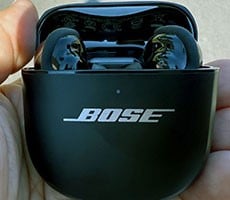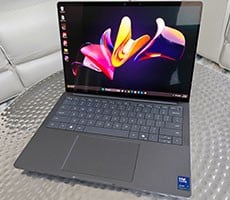Lenovo Yoga 9i 2-in-1 Aura Edition Review: System And Graphics Benchmarks
The Lenovo Yoga 9i 2-in-1 Aura Edition we tested runs on an Intel Core Ultra 7 258V processor with integrated Intel Arc graphics. Base configurations start with 16GB LPDDR5X-8533MT RAM and 512GB SSD M.2 2242 PCIe Gen4 TLC, with the option to go to 32GB and 1TB, respectively. With the RAM soldered onto the motherboard, there’s no upgrade path beyond the point of purchase, making the 16GB variants less enticing. However, you have more leeway with the onboard storage, which is removable, opening the door to expanding the SSD on your own later on, if you're one to tinker.
Lenovo Yoga 9i 2-in-1 Aura Edition CPU, System, Gaming And Graphics Benchmarks
But I digress, let's move on to the specifics of benchmarking this new Lenovo laptop...
ATTO Disk Benchmark Results
As for the benchmarks, ATTO is a good place to start because of how it measures how good the Yoga 9i’s SSD is when it comes to read/write speeds and IOPS. While our review unit had the 1TB drive, we expect the 512GB variants would likely score similarly.
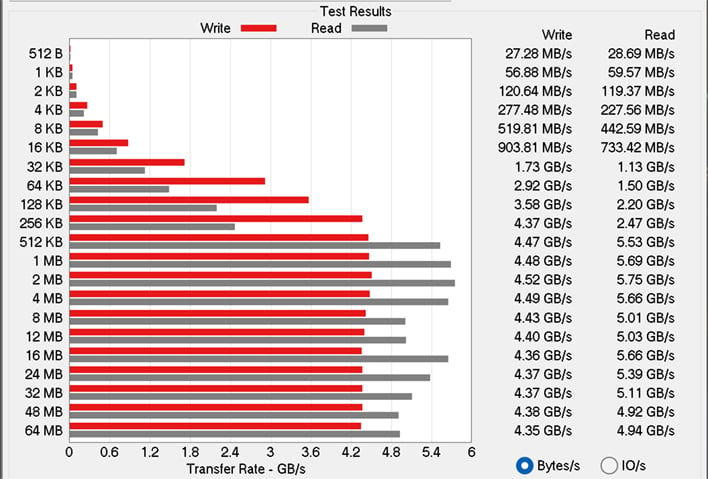
Speedometer 3.1 Browser Benchmark Results
BrowserBench.org's Speedometer is a good way to measure web application performance in how it runs a rapid test that includes different web apps and web development frameworks, including React, Angular, Ember.js, and even simple JavaScript. To gauge how well this works on the Yoga 9i, we ran the test on both the latest versions of Chrome.
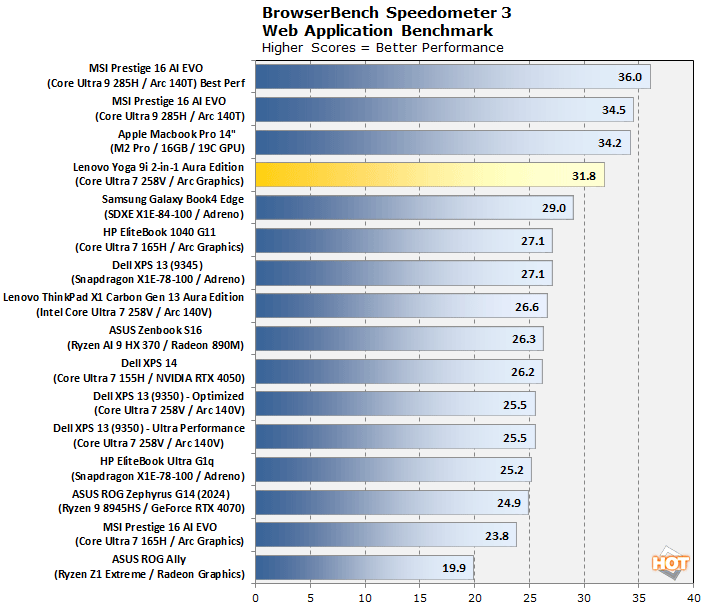
While Chrome delivered a solid 31.8 score on this Lenovo machine, which is very respectable for Lunar Lake-based hardware and about where we expected it to land with great overall system responsiveness.
MAXON Cinebench 2024 3D Rendering Benchmark
Next up is the latest-generation 3D rendering benchmark from Maxon, based on the Cinema 4D rendering engine. It's a purely CPU-based test that doesn't make use of the graphics processor or NPU, and it scales very well with additional CPU cores. We ran both single- and multi-threaded tests on all of the machines in the charts.
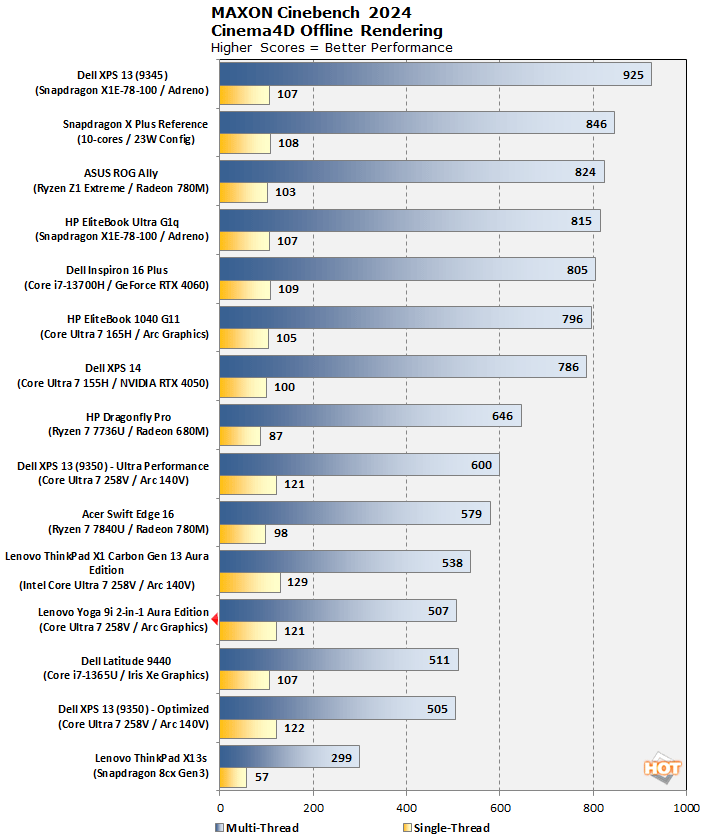
It's probably not a surprise the numbers largely echo what other Lenovo machines with similar specs deliver. We've seen a similar story from competing brands' laptops running the same chip as well, though our testing here was performed at "out of the box" balanced power profile settings. If you turn up the dial in Lenovo's Vantage software settings, you could get a bit more multithreaded performance, though single thread perf is already rather strong with this machine.
Geekbench 6 CPU Performance Benchmark
Geekbench is a cross-platform benchmark that simulates real-world workloads in a wide variety of tasks, including encryption, image processing, physical simulation, machine learning, and many more. We tested the systems featured here with the latest Geekbench 6 version to get an idea of their overall system performance.
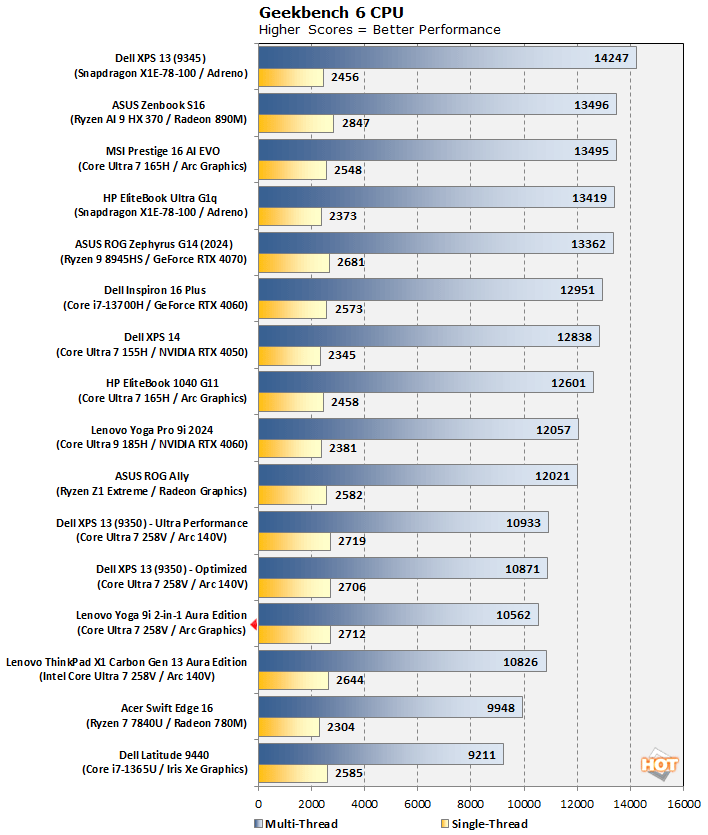
It’s perhaps not surprising the Yoga 9i scores so closely to Lenovo’s ThinkPad X1 Carbon Gen 13 Aura Edition given the two share the same exact same CPU (not to mention GPU and NPU as well). Also not uncommon for machines running on the Core Ultra 7 258V, so this device meets expectations in that regard.
UL PCMark 10 Applications Benchmark
The PCMark 10 Applications benchmark measures performance in the Microsoft Office suite, as well as in the Edge browser, offering native instruction set-compatible versions of the apps for optimal performance across a wide variety of workloads in tools office workers, students and home users utilize every day. The following results should show a view of performance with a best foot forward from all systems tested.
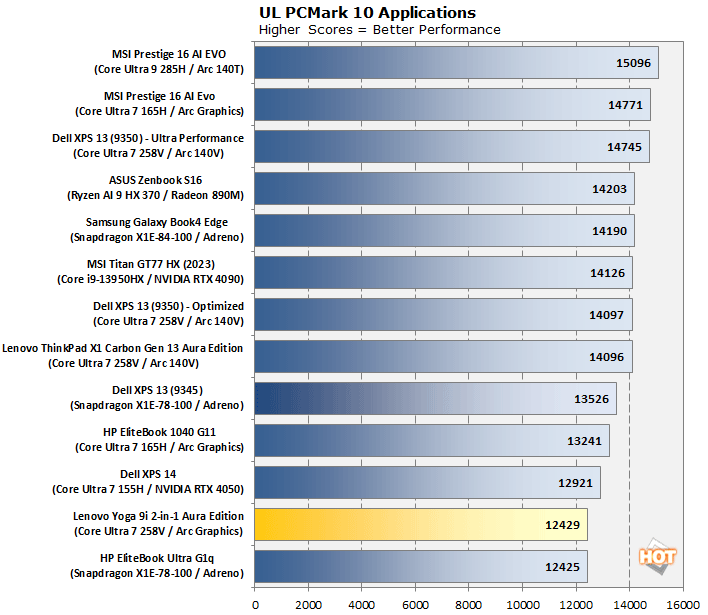
Based on the results, the Yoga 9i actually lags behind the pack but we're not so sure the numbers reflect what most users will experience running Office and similar apps. Working on documents ourselves, there was no definitive lack of processing power or latency adversely affecting an assignment or project. Unique circumstances, like tougher multitasking, might change that in a more subjective way, however.
UL Procyon AI Computer Vision Benchmark
The idea of “edge AI”, or running AI workloads natively on your local devices, instead of in the cloud, is only just emerging on mainstream PCs. As such, benchmarks for these workloads aren't exactly prolific. Fortunately, UL has already built a few into its Procyon benchmark suite. The following is a look at how a few machines do in this benchmark suite's AI Computer Vision benchmark, which exercises the test subject's ability to handle machine vision workloads, which you'll find in everyday tasks like webcam background blur, subject tracking, eye gaze correction and other effects, for example.
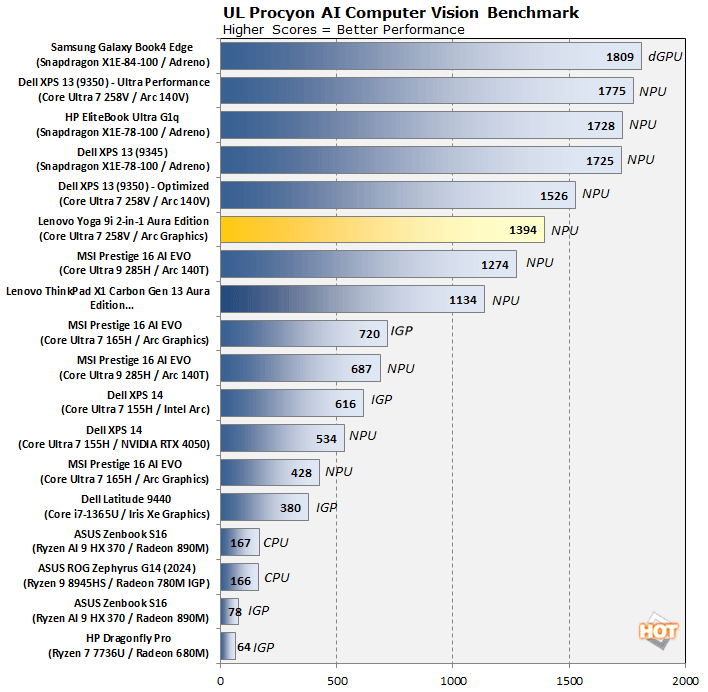
The Yoga 9i serves up a solid score due to the onboard NPU carrying the load, making it clear Copilot+ capable machine, in addition to other light duty AI tasks that should also run smoothly, and locally, on this platform.
UL 3DMark Gaming Benchmarks
3DMark has a wide variety of graphics and gaming related tests available. In this next test, we chose to run 3DMark Night Raid, a modern DirectX 12 test specifically for mobile platforms with integrated graphics, as well as the more-demanding, cross-platform Wild Life Extreme benchmark which utilizes more modern rendering APIs.
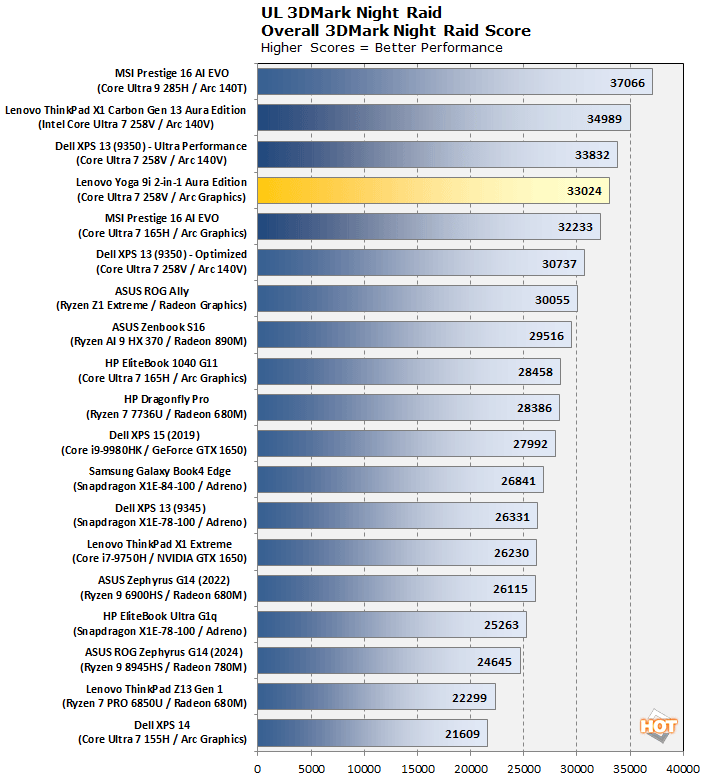
While Qualcomm’s leaner Snapdragon X chips may find their way up certain benchmarks, that’s not happening in this case. Integrated graphics aren’t often a boon to heavier PC gaming workloads, yet Intel’s Arc iGPU on board the Core Ultra 7 258V proves itself capable with excellent results. The Night Raid test, in particular, bears that out, outclassing some AMD Radeon and all Qualcomm Adreno iGPUs in the list.
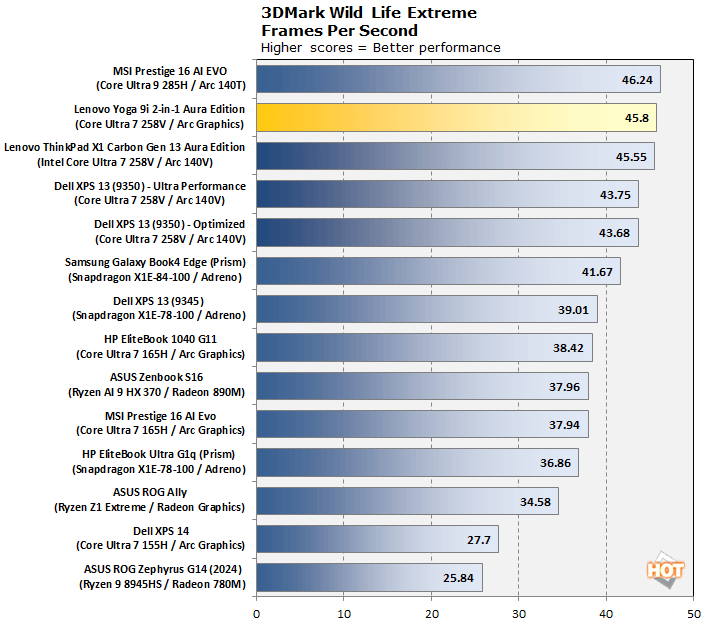
The Wild Life Extreme test maintains that momentum, hitting impressive heights versus other comparable laptops in this weight class.
F1 22 Formula 1 Racing Game Benchmark
Racing simulator F1 2022 is a DirectX 12 game title that is surprisingly sensitive to certain system configurations, so we enjoy using it as a test because it can really tease out some performance characteristics. We tested the game in its High graphics preset, with upscaling disabled, and at 1080p resolution.
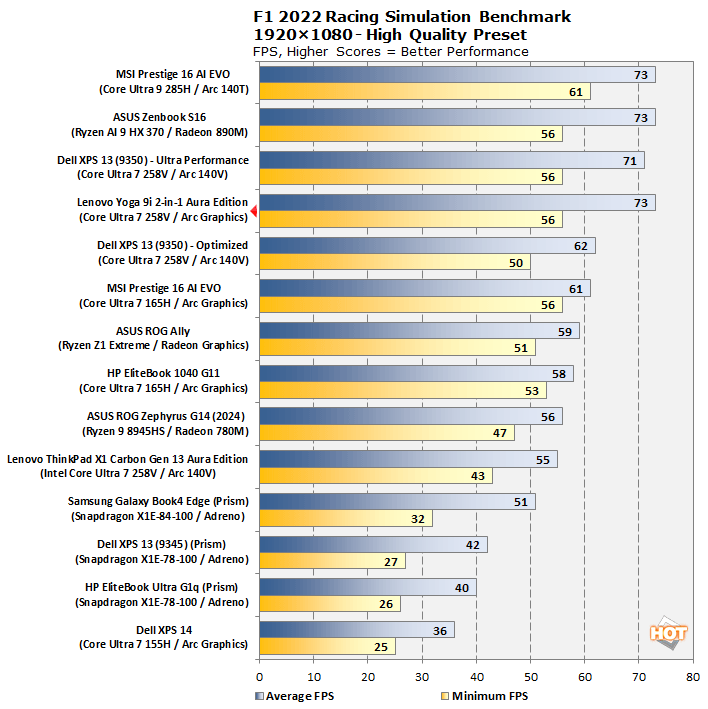
The Yoga 9i hit bigger numbers than we expected in this benchmark, ending up near the top of the heap among Lunar Lake models. Despite running on the same components as Lenovo's own ThinkPad X1 Carbon in this graph, it outpaces it in this test. We ran the benchmark repeatedly to verify, routinely hitting an average over 60fps, indicating this 2-in-1 has some gaming chops on top of everything else it’s good at. Again though, we'd point to likely Intel graphics driver optimization over time that could have contributed to the Yoga 9i's lead versus the other machines' (with similar configs) results from months ago.




